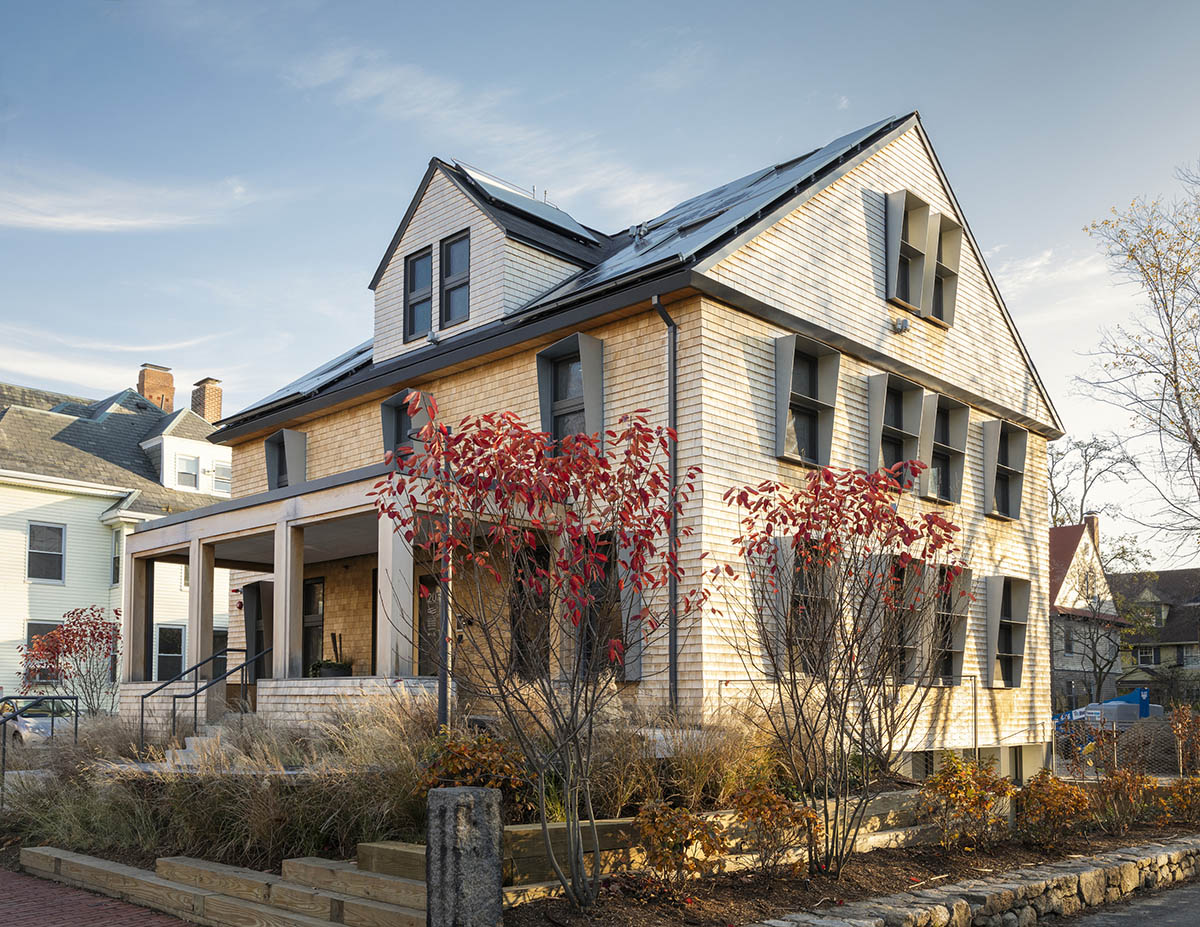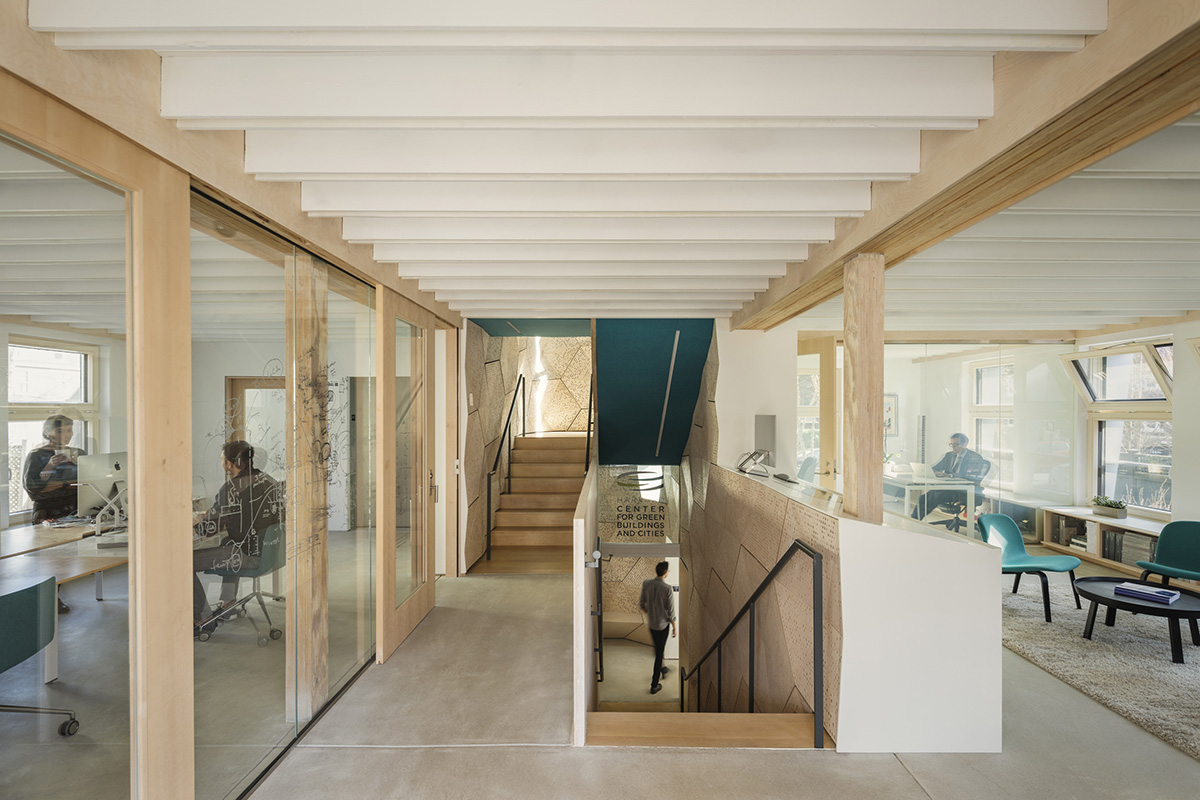Submitted by WA Contents
Snøhetta and Harvard for Center for Green Buildings and Cities Unveil zero-emission house
United States Architecture News - Dec 17, 2018 - 04:55 14682 views

The Harvard Center for Green Buildings and Cities (CGBC) at the Harvard Graduate School of Design (GSD) announced the completion of a new house and prototype designed by Norwegian architecture firm Snøhetta.
Called HouseZero, the house, built in a pre-1940s in Cambridge, has been renovated an ambitious living-laboratory and an energy-positive prototype for ultra-efficiency that can help us to understand buildings in new ways.

The design of HouseZero has been driven by radically ambitious performance targets from the outset, including nearly zero energy for heating and cooling, zero electric lighting during the day, operating with 100 percent natural ventilation, and producing zero carbon emissions.

The building is intended to produce more energy over its lifetime than was used to renovate it and throughout its subsequent operation. Snøhetta was the project’s lead architect and Skanska Teknikk Norway was the lead energy engineer.
Leveraging HouseZero as both a workspace and a research tool, the CGBC will use millions of data points from hundreds of sensors embedded within each component of HouseZero to continually monitor its performance. This sensory data will also provide Harvard’s researchers with an unprecedented understanding of complex building behavior.

This data will in turn, fuel research involving computational simulation, helping the CGBC develop new systems and data-driven learning algorithms that promote energy-efficiency, health, and sustainability.

"Harvard HouseZero is an extraordinary physical example of efficiency and transformative design," said Mohsen Mostafavi, Dean of Harvard GSD and the Alexander and Victoria Wiley Professor of Design.
"As a living laboratory, it equips Harvard students and researchers with an unparalleled, innovative infrastructure for exploration and research as they design the next generation of sustainable buildings and cities around the world."

As a prototype, HouseZero works to address one of the biggest energy problems in the world today— inefficient existing buildings. The U.S. building stock is responsible for around 40 percent of energy consumption, with housing nearly a quarter of that use. Property owners spend more than $230 billion annually heating, cooling and powering its 113.6 million homes.

[AL9] Addressing the energy-inefficiencies locked into this problematic building stock offers tremendous opportunity for curbing its impact on climate change.
Paving the way through ultra-efficient retrofit strategies, HouseZero creates a blueprint for reducing energy demands and increasing cost savings for property owners.

HouseZero will be used to research how to fundamentally redefine how a structure can connect with and respond to its natural environment to promote efficiency and health.
Rather than approaching the building as a "sealed box," the building envelope and materials of HouseZero were designed to interact with the seasons and the exterior environment in a more natural way. The building will adjust itself constantly— sometimes by the minute— to reach thermal comfort for its occupants.

As a living lab, the Center’s researchers are afforded inspiring surroundings that they themselves will be able to control and adapt. With time, the CGBC’s research has the potential to greatly diminish the environmental impact of the building industry through widespread sharing and implementation of HouseZero’s findings and data-driven building research across new construction and future building renovations worldwide.






Image courtesy of Snøhetta
Project facts
Client: Harvard Center for Green Buildings and Cities
Lead Architect, Landscape Architect and Interior Designer: Snøhetta Energy/Climate Engineer: Skanska Teknikk (Norway)
Structural Engineering: Silman Associates
MEP/FP Engineering, Lighting: BR+A
Civil Engineering: Bristol Engineering
BAS/Controls/Natural Ventilation System: WindowMaster Acoustics: Brekke & Strand Akustikk
Code & Accessibility: Jensen Hughes
Geotechnical Engineering: Haley & Aldrich
Vertical Transportation: Syska Hennesy
Specficiations: Kalin Associates
BAS/Controls/Security Systems: Siemens Building Technologies Photovoltaic System: Solect Energy
Landscape Architect, rear yard and surrounding properties: Reed Hilderbrand Project Management: Harvard Planning & Project Management & CSL Consulting Operations Support: Harvard Graduate School of Design Staff
All images © Harvard Center for Green Buildings and Cities, Photographer © Michael Grimm, unless otherwise stated.
> via Snøhetta
